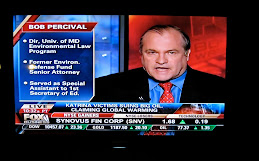Air pollution from fires set for landclearing in Indonesia has now become so bad that the country’s military is assisting in fighting the fires and evacuating people from the most affected regions. A spokesperson for Indonesia’s Meteorology, Climatology and Geophysics Agency described the fires as “a crime against humanity of extraordinary proportions.” It is estimated that the fires have cost the Indonesian economy more than $30 billion while causing more than 500,000 cases of respiratory infections. Kate Lamb, “Indonesian Fires Labelled a ‘Crime Against Humanity’ as 500,000 Suffer,” The Guardian, Oct. 26, 2015. The fires caused Indonesian President Joko Widodo to cut short a state visit to the U.S. on October 26. Satellites operated by NASA have detected more than 115,000 fires in Indonesia, which on 26 days have released more greenhouse gases than the entire U.S. economy.
On Friday October 23, EPA’s Clean Power Plan was published in the Federal Register. At least 17 separate lawsuits challenging the rule were filed in the D.C. Circuit on the same day the rule was published. The state of West Virginia, joined by 23 other states, was the lead plaintiff in the first lawsuit filed. Industry trade associations, unions, and the states of Oklahoma and North Dakota also filed suits. Several of these states and groups prematurely filed law suits last year before the rule, which regulates emissions of greenhouse gases from existing powerplants, even was adopted in final form. These cases were dismissed as premature, but the new round of litigation is timely filed. The initial battle will be over whether the court should stay the rules pending the outcome of the litigation, which ultimately is likely to reach the U.S. Supreme Court.
On October 14, more than twenty students from three Maryland environmental law classes attended an oral argument at the U.S. Supreme Court in an important case involving efforts to encourage more efficient use of energy. The case, Federal Energy Regulatory Commission (FERC) v. Electric Power Supply Association, involves review of a FERC order encouraging utilities to implement demand-response programs to reduce consumption of electricity at peak hours. The students came from my Environmental Law class at the University of Maryland Carey School of Law, my Special Topics in Environmental Law course for undergraduates at the University of Maryland College Park, and Professor Joanna Goger’s Environmental Law course in the university’s Environmental Science and Policy Program. Following the oral argument, the students gathered for lunch at my home on Capital Hill, a short walk from the Court. Because Justice Samuel Alito has recused himself from the case it is possible that the Justices will split evenly 4-4, affirming the decision below that invalidated FERC’s order.
On October 16 the U.S. Department of Interior announced that it was cancelling auctions that had been scheduled for the next two years for oil drilling rights in the Chukchi and Beaufort Seas off the northern coast of Alaska. Interior Secretary Sally Jewell cited market conditions and Shell’s abandonment of its Arctic drilling program. The government also denied requests for lease suspensions from Shell and Statoil, which means that their existing 10-year leases will expire in 2017 and 2020.
From October 15-17 I participated in the annual meeting of the American College of Environmental Lawyers (ACOEL) in New York City. The meeting featured a field trip to the World Trade Center where we were hosted for lunch by Silverstein Properties, developer of the site. Columbia Law Professor Mike Gerrard, who has served as environmental counsel for Silverstein, organized a wonderful seminar on the environmental features of the buildings being built on the site of the 9/11 terrorist attack. Harvard Law Professor Jody Freeman gave a terrific keynote presentation on EPA’s Clean Power Plan and upcoming legal challenges to it. At the closing of the conference on October 17 Assistant Attorney General John Cruden and I presented our joint review of the top environmental law cases of the year and our preview of cases that will be heard in the upcoming year.
On October 22, students from my Global Environmental Law Seminar presented the results of their study of whether Maryland should join the 22 states that have an environmental provision in their state constitution. The study was presented to a multi-denominational group of religious leaders who had gathered for a conference “Awake and Arise: Congregations Restoring Creation” sponsored by the Ecumenical Leaders Group and the Central Maryland Ecumenical Council. The conference was held at St. Mary’s Seminary in Baltimore. The students found that there are two major types of environmental provisions in constitutions: policy directives, which often are designed to protect natural resources, and environmental rights provisions. While many constitutional provisions have been deemed primarily symbolic and not self-executing, others have had a significant aspect on environmental protection. Although the students’ report does not make a formal recommendation, it lays out several options that should be considered in starting a conversation over a possible Maryland amendment.

















